I built a fast-edged buffer using a SY88022L laser-diode driver. The datasheet claims edge rates below 25 ps (20%-80%), which should be around 30 ps if measured 10%-90%. It seems to work OK, but the problem is that my best scope (so far) only has a rise time of around 300 ps, an order of magnitude too slow. This is a design I'll clean up and officially release once I'm sure it works - people might find it useful.
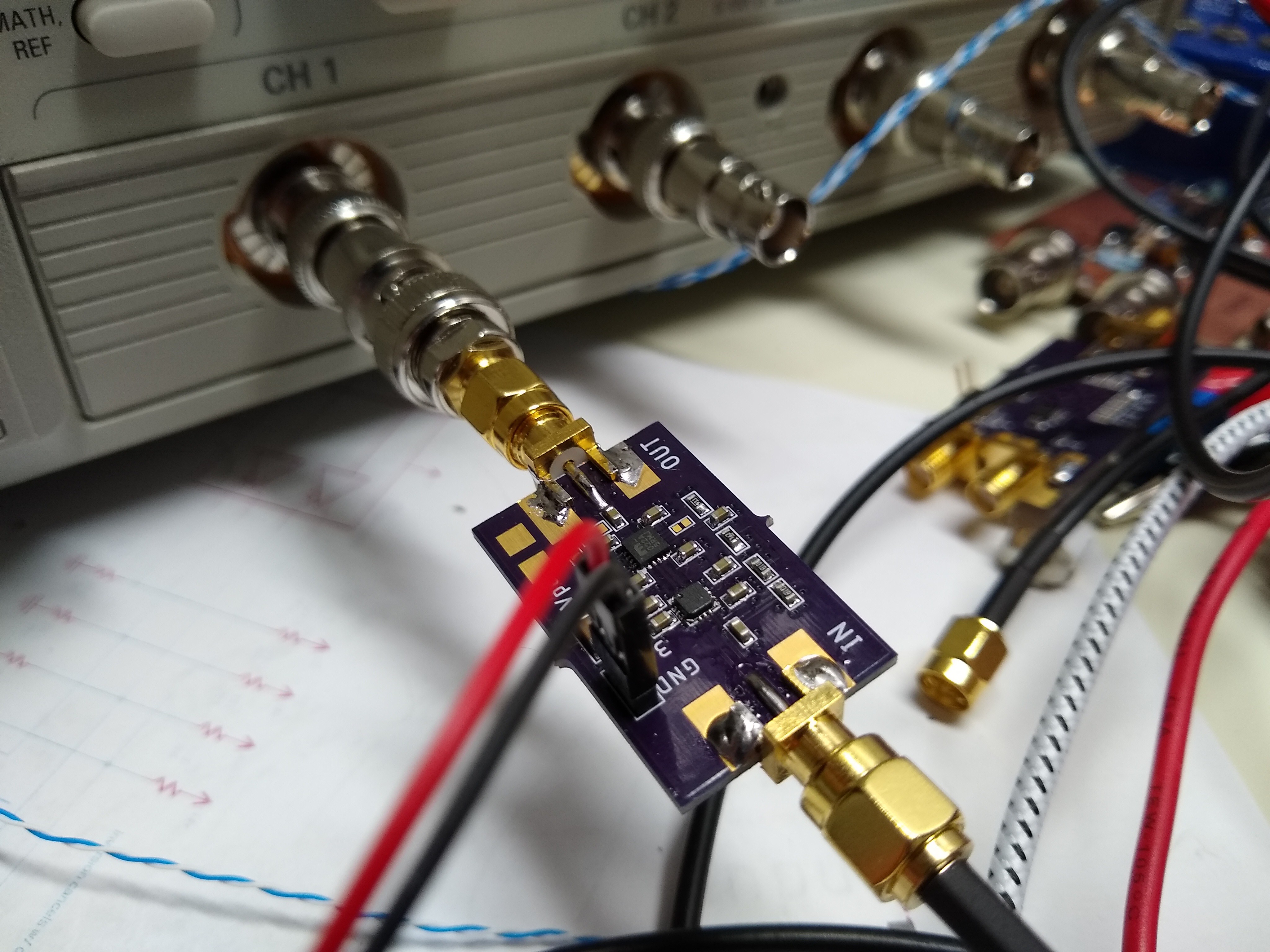
The output driver has a differential CML input, so I used an ADCMP607 CML-output comparator as a buffer/translator from LVCMOS input signals. I'm not sure yet how much jitter this adds, but for just generating an edge without caring *exactly* when, it's fine so far. The ADCMP607 has built-in hysteresis you can adjust with a resistor. Looking at the image, I realize I populated that spot with a capacitor instead of a resistor. Oops. It may work even better with the parts in the right place :-)
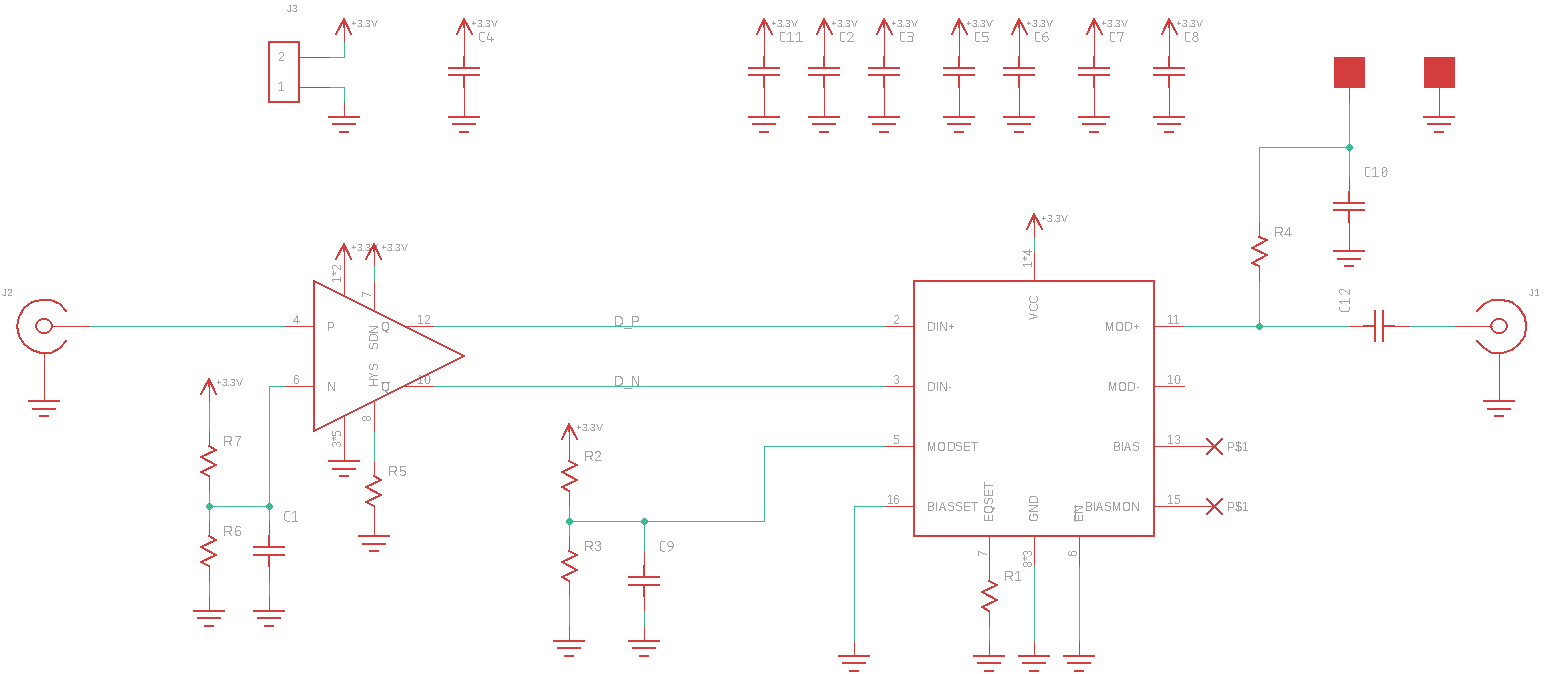
The thing runs on a 3.3V supply, and the input threshold is set at half the supply voltage. For a quick breakout-type test of the SY88022AL, it seems to work pretty well.
There's sites on the PCB for a resistive pullup on the output to increase the voltage step, but I haven't tried doing this yet. The output has around a 1.3V amplitude into 50-ohms. Between the two differential outputs, this is a 2.6V swing. I need at least 3V to drive a diode sampling gate. I need to go back to my notes about this circuit and see if this is performing like I thought it would.
The best measurement I can get of the output shows a 310 ps rise time. Of course, this is a 1 GHz scope, so this is really just a measurement of the scope itself, equating to a bandwidth of 1.13 GHz. I have every reason to believe the edge is significantly faster than this, although I have no way to prove it yet.
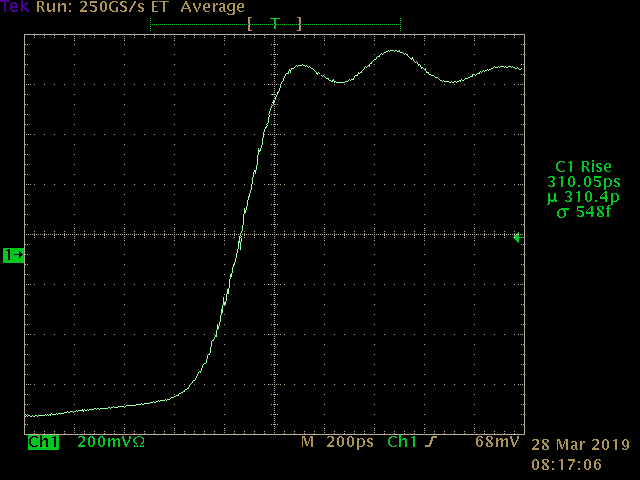
This trace looks an awful lot like the following shot that was in the ebay listing where I bought the scope. This trace was taken with one of Leo Bodnar's pulsers which achieve 40ps outputs. Note the sloping before the edge and nearly identical ringing after. That must be the scope itself. This is a very good sign, indicating that I may have achieved a good short pulse. Depending on how I set the scaling, I can get the scope to read out measurements in the 280 ps range like in the photo.
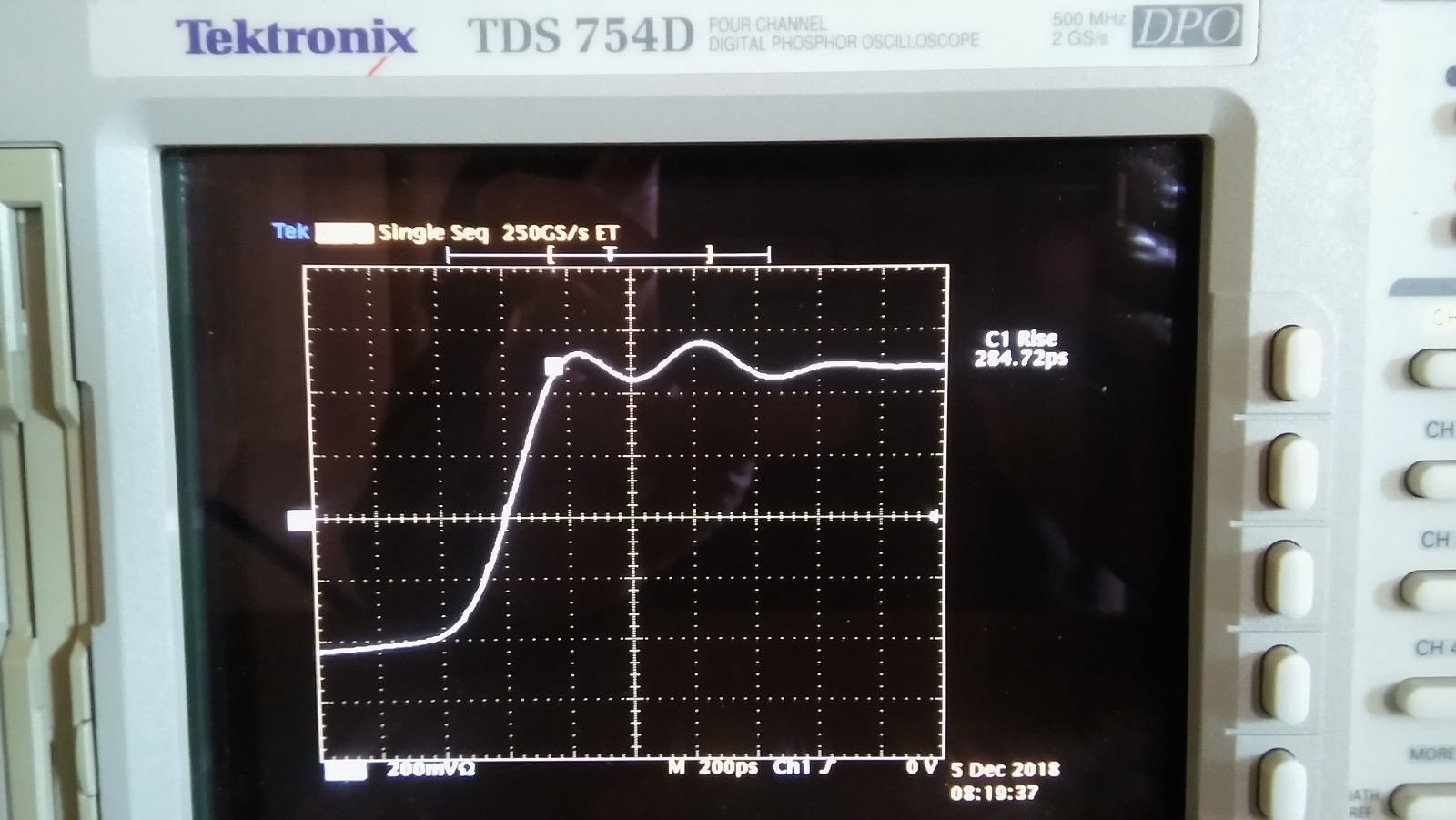
The scope's response makes everything at this scale "look" slow. Here it "looks" faster:
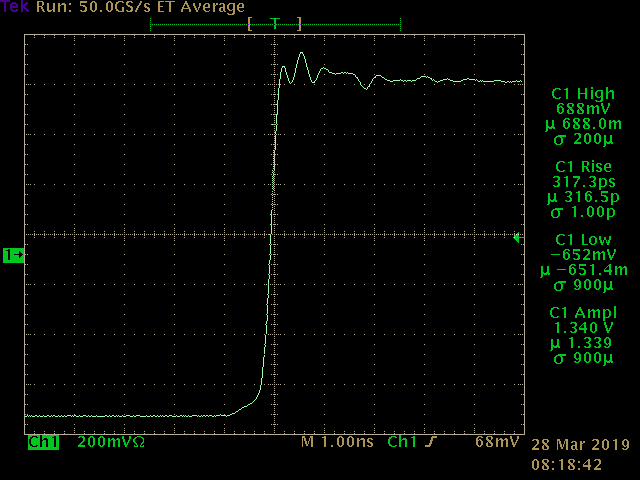
I really need a faster scope in order to build a faster scope. I wonder what's on ebay today.
EDIT: a friend with a 20 GHz scope has offered to measure this for me. Stay tuned.
 Ted Yapo
Ted Yapo
Discussions
Become a Hackaday.io Member
Create an account to leave a comment. Already have an account? Log In.